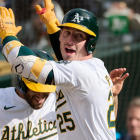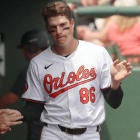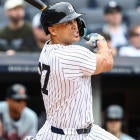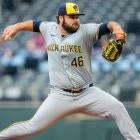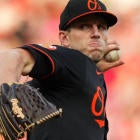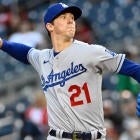A light goes on in the head of every Fantasy owner when a starting pitcher is traded or signs a free agent contract in the offseason. Two considerations immediately seep into the brain.
One is the difference in home ballpark. It is understood that if a right-handed pitcher heads from Boston to San Diego, for instance, the result could be a half-run or more sliced off his earned run average.
The other is the difference in run support. It is understood that if a pitcher heads from Boston to San Diego - yes, it works in this instance as well - the result could be fewer wins, especially on the road, where the vastness of the outfield no longer comes into play.
But Fantasy owners must look into other considerations, even during the season when seeking trade partners, in regard to starting pitchers that have found a new home. It is easy to overthink changes in run support and the relative distances of outfield fences. Several such pitchers have certainly been affected by those factors. But others have experienced unrelated positive or negative shifts in performance.
It seems that for every starting pitcher listed below there is a different reason for a severe upward or downward trend. Let's examine.
Bartolo Colon: His significant collapse (at least until his last start) is certainly not due to a change in ballpark or run support, though the Mets don't exactly overwhelm with the lumber. It's quite possible that age has finally taken a toll - it was bound to happen sooner or later. According to FanGraphs, Colon was peaking at 97 mph last season in Oakland, but hasn't touched 94 this year. His control hasn't taken a hit - he's walked just seven in 64 2/3 innings. But his ERA has skyrocketed from 2.65 to 4.73. The Mets, as usual, mistimed their free agent signing and locked down a veteran to big money that apparently won't be worth it.
Tim Hudson: Few pitchers can claim their best season at age 37, but Hudson is on his way to doing just that. He has embraced his new status as a relative junkballer. As FanGraphs points out, his fastball is very rarely touching 90 mph these days, yet he's a far more effective pitcher. His 1.92 ERA this season is nearly a point lower than his career best. He's unlikely to keep it under 2.00, but keep in mind that it was 3.97 in Atlanta last year. He's walked just six in 70 1/3 innings, which speaks volumes about his confidence and his ability to throw quality strikes.
Phil Hughes: Perhaps the most pronounced example of how a change of scenery (the previous scenery being the short porch at Yankee Stadium) has altered the fortunes of a starting pitcher this season, Hughes is thriving at spacious Target Field. His ERA has fallen from 5.19 to 3.23 and his record sweetened from 4-14 to 5-1. Hughes suddenly feels comfortable pitching to contact as his six walks in in 61 1/3 innings this season with Minnesota attests.
Ubaldo Jimenez: His inconsistency and overall struggles this season after leaving Cleveland for Baltimore has had nothing to do with offensive support or ballparks. Simply put, this is the same old Ubaldo who requires 100 pitches to get through five innings and allows jams to turn into big innings. Though he pitched decently from June forward last season, he was only lights-out in September and he's back to his old habits, as his 2-6 record and 4.65 ERA explain.
Scott Kazmir: Several factors have weighed into Kazmir pitching like an all-star this season. Chief among them is that he has continued the growth as a tactician he began last year in Cleveland. His strikeout numbers are down, but his winning percentage is up because he pounds the strike zone (13 walks in 68 2/3 innings) and keeps the ball in a rather spacious park (four home runs given up). He can pitch comfortably knowing the Oakland offense will provide him with runs. His ERA has fallen from 4.02 in 2013 to a brilliant 2.36.
Jordan Lyles: Escaping a perennially awful Astros team (at least until their current awakening) has undoubtedly played a role in his sudden and unexpected emergence. He's 5-1 with a 3.46 ERA with the Rockies after going 14-29 with an ERA of above 5.00 in each of his three seasons in Houston. His success in Colorado has been predicated greatly on a vastly improved ground ball/fly ball ratio perfectly suited for the thin air at Coors Field.
Ian Kennedy: The worst hitting team in baseball has averaged 3.4 runs per start for Kennedy. The result is a 3-6 record with the Padres despite a 3.59 ERA and more than a strikeout per inning. Heck, he went 15-12 with Arizona in 2012 with a 4.02 ERA. In this case, the fears of Fantasy owners that Kennedy would suffer in San Diego when he was traded there last July have been realized.












